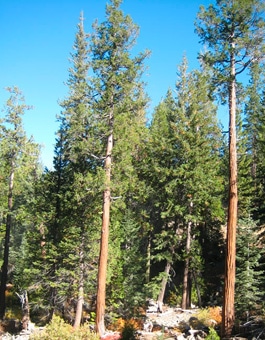

Sculptured tree or lumber
Highly valued as an ornamental tree, it is often used for bonsai and hedges. It is also an important timber tree and is used to make Venetian blinds, sashes, doors and interior finish millwork because of its light, strong, fine-grained wood.
Range
The Coast range of Oregon's Coos and Curry counties host the largest stands of Port-Orford-Cedar. Its native range is limited to southwest Oregon and northwest California. You’ll also find the Port-Orford-Cedar in the margins of wetlands and riparian zones.
Character
It is not unusual to find charcoal on the bark of older trees indicating that they survived many fires. Mature trees frequently grow to diameters of 50 to 70 inches and heights of 200 feet, and live 500 or more years. The foliage is characterized by flattened, fernlike sprays and small, rounded cones.
Understory
On upland sites, the most common understory shrub is the huckleberry oak. On wetter sites, along streams and lakes, you’ll often find western azalea within Port-Orford-Cedar communities.
Climate
It prefers a Mediterranean climate where winters are cool and wet, summers are warm and dry and precipitation is moderate to high, usually 39 to 89 inches annually.
Management
In the mid-1950s the root disease Phytophthora lateralis affected many native stands. The mortality of trees has been high in areas infected for ten years or more. The disease has put the survival of this Oregon treasure at risk. Good management and stewardship are required to ensure its survival.